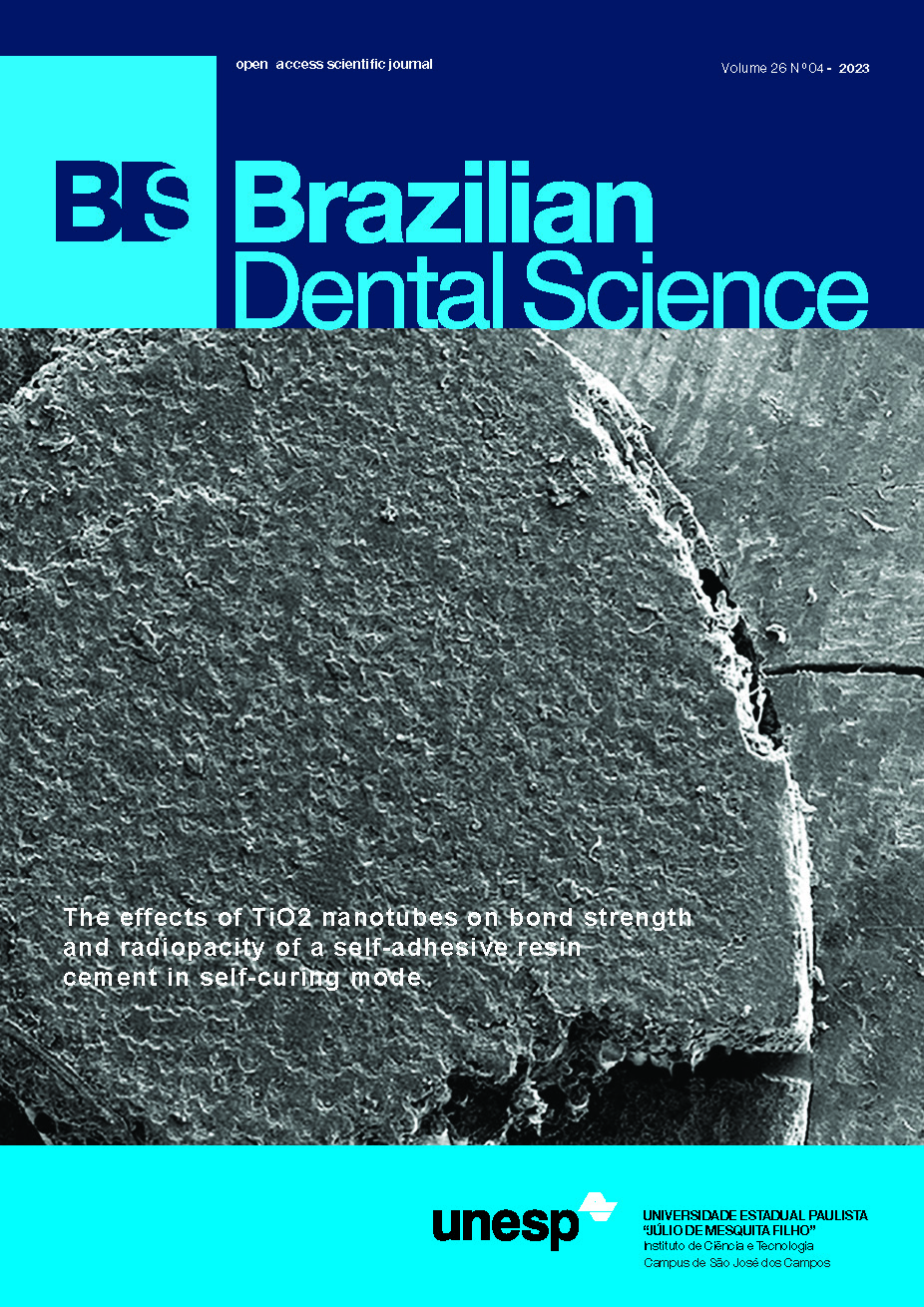Influence of two natural cross-linkers on microtensile bond strength durability – An in vitro study
DOI:
https://doi.org/10.4322/bds.2023.e3869Resumo
Objective: to investigate the effect of two natural cross-linkers on microtensile bond strength (microTBS) and evaluate their influence on the durability of the resin dentin bonds. Material and Methods: the Moringa oleifera and Centella asiatica plant extracts were qualitatively tested with high-performance thin layer chromatography (HPTLC) for the presence of phenols. The phenolic content ranged from 27 to 30 gallic acid equivalents (GAE), microg/mg of dry weight. After etching, two concentrations (5% and 1%) of these two extracts were prepared and used as pretreatment liners on dentin. They were applied for a min. After restoration with resin composite, dentin resin beams were prepared. The study groups were 5% Moringa, 1% Moringa 5% Centella 1% Centella, and control (without cross-linker application). For each group, half of the samples underwent microTBS testing after 24 hours, while the remaining half were immersed in artificial saliva to assess the bond’s longevity after 6 months of ageing. Statistical analysis was performed using one-way ANOVA followed by Tukey’s post hoc test. Results: both 5% and 1% Moringa showed a significant difference (p<0.05) compared to the other groups at both intervals. However, after ageing, the specimens in the control and 1% Centella groups resulted in a significant decrease in microTBS. Conclusion: overall, both concentrations of Moringa (5% and 1%) were effective in stabilising the bond during both intervals.
KEYWORDS
Collagenase; Endopeptidases; Matrix metalloproteinase; Moringa; Phenols.
Downloads
Downloads
Publicado
Como Citar
Edição
Seção
Licença
TRANSFERÊNCIA DE DIREITOS AUTORAIS E DECLARAÇÃO DE RESPONSABILIDADE
Toda a propriedade de direitos autorais do artigo "____________________________________________________________________" é transferido do autor(es) para a CIÊNCIA ODONTOLÓGICA BRASILEIRA, no caso do trabalho ser publicado. O artigo não foi publicado em outro lugar e não foi submetido simultaneamente para publicação em outra revista.
Vimos por meio deste, atestar que trabalho é original e não apresenta dados manipulados, fraude ou plágio. Fizemos contribuição científica significativa para o estudo e estamos cientes dos dados apresentados e de acordo com a versão final do artigo. Assumimos total responsabilidade pelos aspectos éticos do estudo.
Este texto deve ser impresso e assinado por todos os autores. A versão digitalizada deverá ser apresentada como arquivo suplementar durante o processo de submissão.




























